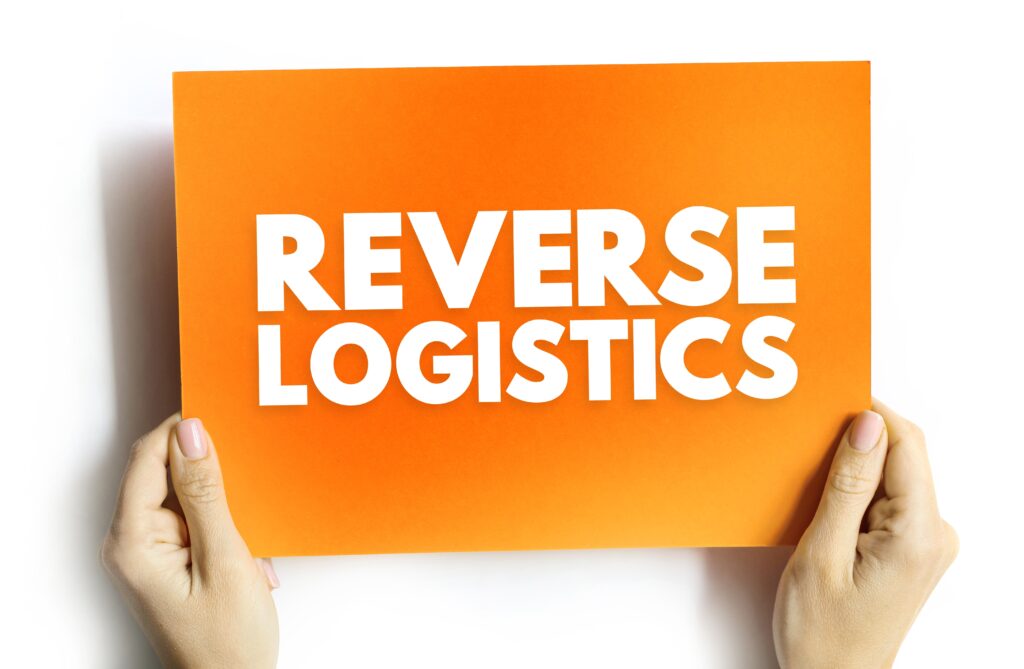
- Products
- Solutions
- Learn
- Partner
- Try Now
As a retailer, you must have heard of the term Reverse logistics. In technical terms, it is a crucial aspect of supply chain management that deals with the process of moving goods from their final destination back to the manufacturer or distributor.
To put it simply, it’s the backward flow of products and materials from the consumer to the manufacturer or distributor. When a customer returns a product for various reasons, such as defects, damage, or no longer needing it, this comes into play.
In this guide, we’ll explore what reverse logistics entails, its significance in today’s business landscape, and some basic strategies for effective implementation.
What is Reverse Logistics?
Traditionally, logistics managers have focused on the flow of products from production sites to consumers. However, in a circular economy, the return flow of goods cannot be overlooked.

Reverse logistics refers to the process that happens after the sale to recapture value and ensure efficient recycling or disposal of materials. The returned items are collected, transported, and processed to determine the best course of action, such as repair, refurbishment, recycling, or disposal.
Why is it important?
It helps companies recover value from returned products, reduce waste, and improve customer satisfaction by properly handling returns and exchanges. It also supports environmentally responsible practices by promoting reuse, repair, and recycling of products and materials.
Economic Benefits
- Cost Savings: Efficient reverse logistics can significantly reduce costs related to waste disposal, and by recycling and refurbishing, companies can decrease their input costs.
- Recovery of Value: Products returned by customers or unsold inventory can be resold, recycled, or refurbished, recovering costs that would otherwise be lost.
Also Read
What is White Glove Delivery and Why It Matters for Your Business?
Environmental Impact
- Sustainability: By reusing components and materials, companies can lower their environmental impact significantly, contributing to a more sustainable global economy.
- Compliance: Many regions have stringent regulations regarding waste disposal and recycling. Effective logistics helps companies stay compliant and avoid potential fines.
Customer Satisfaction
- Enhanced Customer Service: A smooth return process improves overall customer experience and can enhance brand loyalty and trust.
- Competitive Advantage: Companies that manage returns and warranties effectively are often seen as more reliable by consumers.
Basic Strategies for Implementing Reverse Logistics
Implementing an effective reverse logistics/ returns management program involves several strategic and operational changes. Here are some basic strategies:
Evaluate and Plan
- Assess Volume: Understand the volume of returns and the reasons for them. This data is crucial for planning any reverse logistics operation.
- Infrastructure: Ensure that there is sufficient infrastructure in place to handle the reverse flow efficiently.
Implement Technology Solutions
- Software Solutions: Use technology like RFID tags for tracking returned items, and logistics software like Tookan to manage inventory and shipping schedules effectively.
- Data Analytics: Leverage data analytics to predict returns and to plan for them better.

Enhance Visibility
- Tracking Systems: Implement systems that allow both the company and the customers to track the return process. Visibility can significantly enhance customer satisfaction.
- Communication Channels: Keep open lines of communication with customers throughout the return process.
Focus on Quality Control
- Inspection and Sorting: Set up robust processes for inspecting returned items and sorting them based on their condition and potential for reuse or refurbishment.
- Repair Programs: Develop capabilities to repair and refurbish goods where it is economically viable.
Also Read
Let’s bust 5 common myths related to delivery businesses
Optimize Transportation
- Logistical Arrangements: Arrange for efficient transportation that minimizes costs and environmental impact. Consider local processing to reduce transportation requirements.
- Pooling Resources: Pool returns from multiple locations to optimize transportation and processing.
Cultivate Partnerships
- Third-party Logistics Providers: Partner with logistics providers who specialize in this to gain from their expertise and network.
- Eco-friendly Partnerships: Collaborate with recycling firms and non-profits dedicated to reducing waste.
Conclusion
Returns Management is more than just an operational necessity; it’s a strategic asset that can provide significant economic, environmental, and customer relations benefits. By understanding its fundamentals and implementing some basic strategies, companies can improve their processes.
Also Watch
Subscribe to stay ahead with the latest updates and entrepreneurial insights!

Subscribe to our newsletter
Get access to the latest industry & product insights.





















